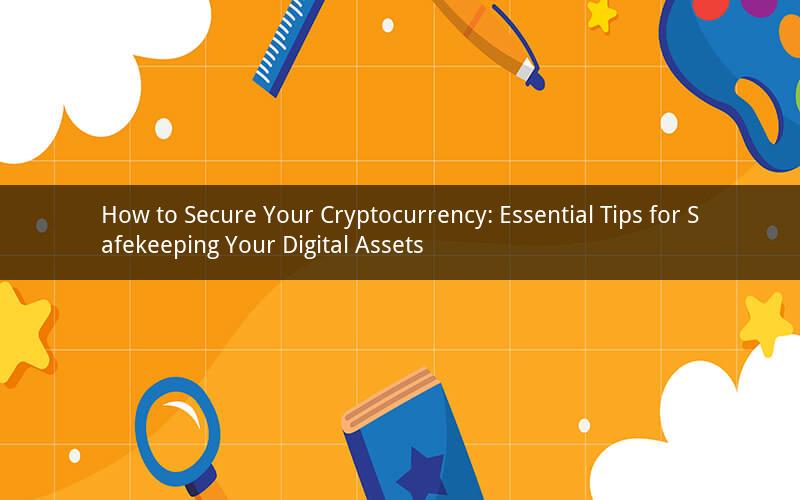
Introduction
In the rapidly evolving world of cryptocurrencies, ensuring the safety and security of your digital assets is paramount. With numerous instances of hacks, thefts, and losses, it's crucial to adopt best practices to safeguard your cryptocurrency investments. In this article, we will delve into the essential tips and techniques to secure your cryptocurrency, ensuring that your digital wealth remains safe and protected.
1. Choose a Reputable Wallet
The first step in securing your cryptocurrency is selecting a reliable and secure wallet. Here are a few factors to consider:
a) Hardware wallets: These wallets store your cryptocurrency offline, providing maximum security. Examples include Ledger and Trezor.
b) Software wallets: These wallets can be installed on your computer or smartphone, allowing you to access your assets on the go. Ensure that you use reputable software wallets like Exodus, Electrum, or MyEtherWallet.
c) Mobile wallets: These wallets are designed specifically for mobile devices and offer ease of access. Be cautious and choose reputable mobile wallets like Coinomi or Trust.
2. Utilize Strong Passwords and Two-Factor Authentication (2FA)
Creating strong passwords is crucial for protecting your cryptocurrency wallet. Here are some tips:
a) Use a combination of letters, numbers, and special characters.
b) Avoid using common words, phrases, or easily guessable information.
c) Change your passwords regularly.
In addition to strong passwords, enable two-factor authentication (2FA) for an extra layer of security. This process requires you to provide a second form of verification, such as a unique code sent to your mobile device, before accessing your wallet.
3. Be Cautious of Phishing Scams
Phishing scams are a common method used by hackers to steal cryptocurrency. Here are some ways to identify and avoid these scams:
a) Be wary of unsolicited emails or messages requesting your private keys, passwords, or other sensitive information.
b) Always verify the sender's identity before sharing any personal or financial information.
c) Look for signs of phishing, such as suspicious URLs or email addresses that do not match the official website or company domain.
4. Regularly Backup Your Wallet
Backing up your cryptocurrency wallet is essential to prevent loss due to hardware failure, accidental deletion, or theft. Here's how to do it:
a) Create a backup of your wallet file on a separate device or external storage.
b) Keep your backup in a secure location, such as a fireproof safe or a safe deposit box.
c) Test your backup to ensure it can be restored when needed.
5. Stay Informed about Security Threats
Keeping up-to-date with the latest cryptocurrency security threats is crucial for maintaining the safety of your digital assets. Here's how to stay informed:
a) Follow reputable cryptocurrency news websites, forums, and social media channels.
b) Attend cryptocurrency conferences and webinars to learn from experts in the field.
c) Subscribe to security alerts and notifications from your wallet provider.
6. Use Multi-Signature Transactions
Multi-signature transactions require multiple private keys to authorize a transaction. This means that even if one key is compromised, your cryptocurrency remains secure. Implementing multi-signature transactions can be done through:
a) Creating a shared wallet with friends or family members, requiring multiple keys for a transaction.
b) Using a third-party service that supports multi-signature transactions, such as MetaMask.
7. Be Mindful of Exchanges and Online Platforms
When trading or storing your cryptocurrency on exchanges or online platforms, consider the following security measures:
a) Choose reputable and regulated exchanges to trade your cryptocurrency.
b) Enable 2FA on your exchange account.
c) Be cautious when using third-party platforms, as they may not offer the same level of security as official exchanges.
8. Educate Yourself about Security Best Practices
The most effective way to secure your cryptocurrency is to be well-informed. Here are some resources to help you learn more about cryptocurrency security:
a) Read books, articles, and whitepapers on blockchain technology and cryptocurrency security.
b) Attend cryptocurrency workshops and webinars to gain hands-on experience.
c) Join cryptocurrency communities and forums to discuss security concerns and best practices.
Q1: What is the most secure type of cryptocurrency wallet?
A1: Hardware wallets are considered the most secure type of cryptocurrency wallet, as they store your assets offline, reducing the risk of hacking.
Q2: Can I recover my cryptocurrency if my wallet is lost or stolen?
A2: Yes, if you have a backup of your wallet, you can recover your cryptocurrency by restoring the backup to a new wallet.
Q3: Is it necessary to enable two-factor authentication (2FA) for my cryptocurrency wallet?
A3: Yes, enabling 2FA provides an extra layer of security, making it harder for hackers to access your assets.
Q4: How often should I change my cryptocurrency wallet password?
A4: It's recommended to change your wallet password at least every three months to reduce the risk of unauthorized access.
Q5: Can I use the same password for multiple cryptocurrency wallets?
A5: No, it's crucial to use a unique password for each wallet to prevent a single compromised password from affecting multiple accounts.